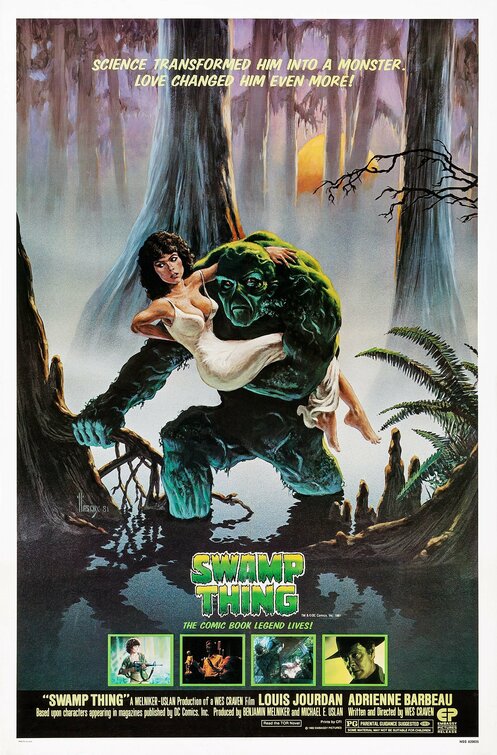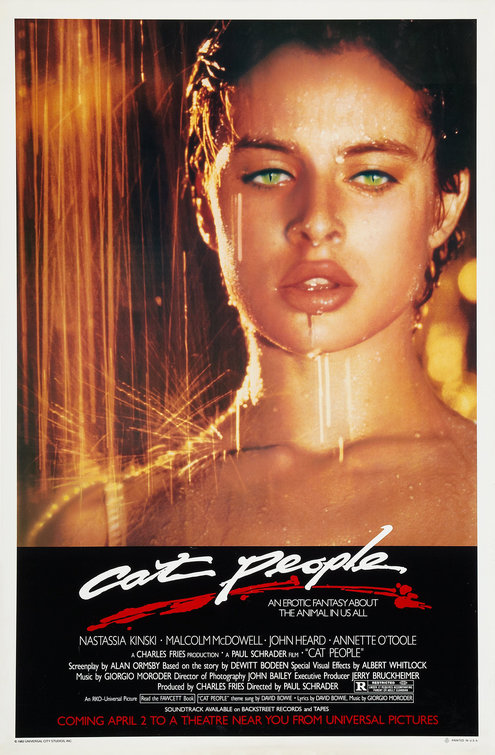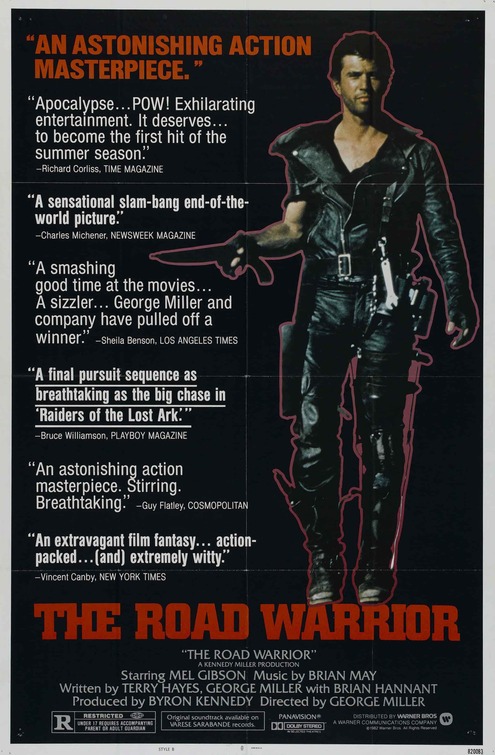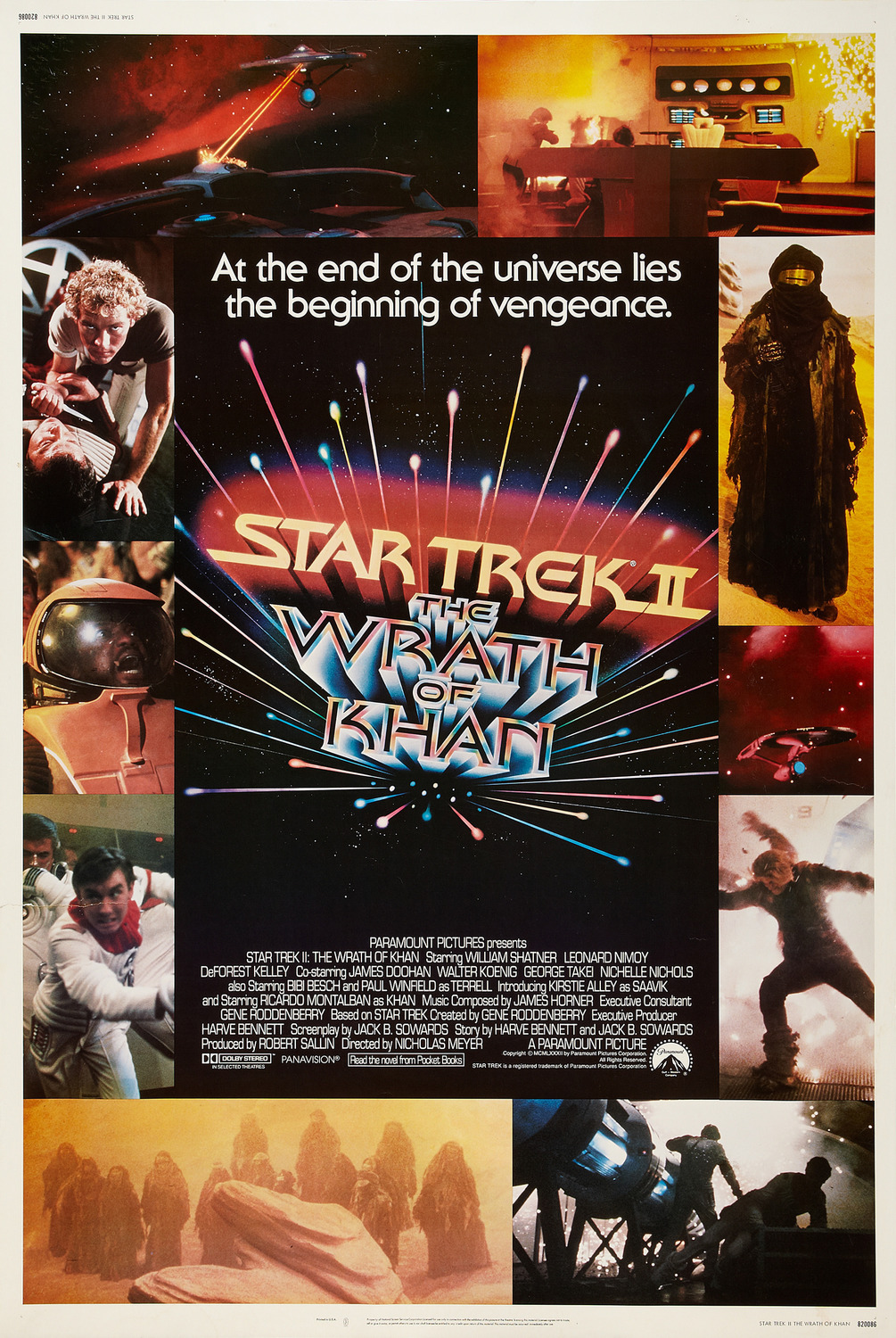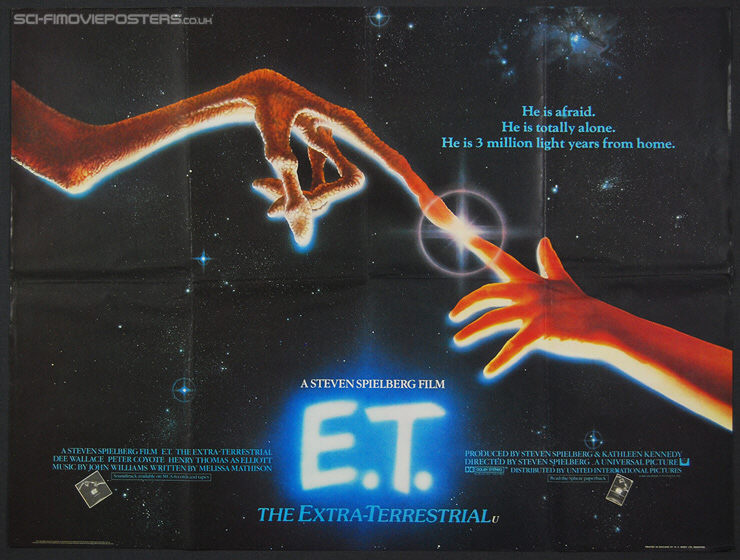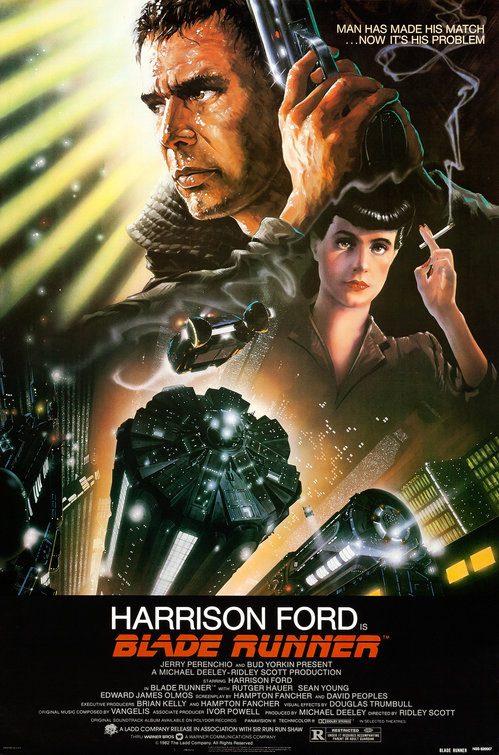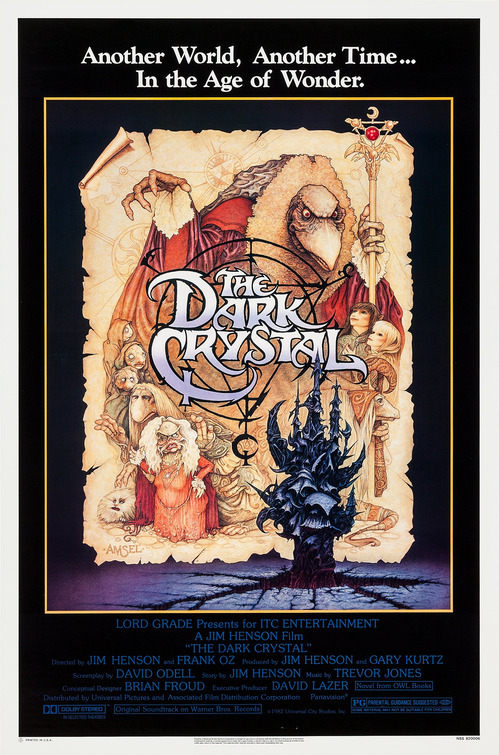I am a big fan of a good well-made suspenseful horror film. Yet I have not been scared watching a movie in something like 30 years. Sure, there have been many films in the genre that I have found tense, disturbing, suspenseful and just plain creepy. As far as reacting with actual real fear to something that I've seen on screen, though...nope...nothing....not for a long time.
However, in my younger days (much younger, in some cases) , I was pretty frakin' terrified by some movies. Most especially, the ones I used to watch alone on TV, late at night, after everyone else in my house had gone to sleep. That intense movie-watching induced fear phenomenon has rarely repeated itself since then.
I suppose my lack of recent cinematic fear could be a function of age. Or could be that I went on to acquire so much knowledge regarding the techniques of film-making that it became hard for me (at least on some level) not be to conscious of the all the cinematic techniques that are generally employed by any given film maker when they are attempting to scare the living shit out of you.
Back in the day, I was a sucker for many a good horror movie and even some movies (I hesitate to confess) that were not even really in the horror genre. Those movies, and more particularly particular certain scenes in them, have stayed with me. I can still remember and relive the fear they induced. Today, I understand why those scenes managed to get to me way back when but that does lessen my sense memory of the whole affair.
So now I'm about to induce that sense memory once again as I present my Top Five Movies Scenes That Scared the Hell out of me.
5.The Birds (1963)
D: Alfred Hitchcock
Scene: Immediately after the birds' first big attack.
Given the era that I grew up in, Alfred Hitchcock just had to make this list. For my money, The Birds is Hitch's scariest film. No. Not Psycho. The Birds.
Yes, I know that Psycho is the movie that for, better or worse, gave us the entire horror slasher genre. Janet Leigh getting stabbed to death with a large kitchen knife while taking a shower is pretty disturbing, to be sure. However, I was much older by the time I finally saw Psycho. More importantly, though, I think the idea of being attacked by a psychotic transvestite while washing oneself never really connected with me. Now, when it came to the idea of these flying animals that I'd seen in large numbers up in the trees all my life just suddenly, and for no apparent reason, aggressively turning on the human race, well, that's a fear that I connected with quite a bit. I'd experienced first hand seagulls trying to steal french fries from the lone helpless kid on the beach. The knife wielding psychotic transvestites didn't really try that one so much.
I was 11 or 12 when I first saw The Birds. It would be several years before I'd take an entire university course on Hitchcock and would come to know the guy's work inside out. Back then, all by myself, watching the late late show (that's what they used to call midnight TV airings of movies in the pre-Craig Ferguson era), I was fair game for Mr.Hitchcock's masterful fright techniques. About all I knew about the celebrated suspense director at the time was the parody version of him I'd seen on The Flintstones.
The particular scene that really freaked me out did not involve an avian attack. It involved its after math. Right after the 1960's version of Angry Birds launched the film's first action attack set piece, Rod Taylor and Tippi Hedren, the stars of the film, find a ten year old Veronica Cartwright on the balcony of her house. In the scene, the young Cartwright has just discovered the dead body of her teacher played by Suzanne Pleshette (as a longtime fan of The Bob Newhart Show, that in of itself was already disturbing enough). In the scene, Cartwright is wailing her eyes out. There is something about her cries over a death that we did not even witness that was particularly chilling. In addition, the matter-of-fact way that Hitchcock shot the scene made it emotionally disturbing. It managed to induce a fear of the birds after the fact. The avian aggression is nowhere near as scary the deep psychological scars it leaves behind.
You've got to hand it to Hitch for, among other things, having a perfect eye for casting. If you've seen Veronica Cartwright in any of her many characters roles in films ranging from Alien to The Right Stuff to The Witches of Eastwick, you know that totally nailing hysterical crying scenes is one of Ms.Cartwright's amazing gifts as an actor.
4. Fantastic Voyage (1966)
D: Richard Fleischer
Scene: White blood cells attack the miniaturized submarine.
Yeah. I know. Even the description of the scene sounds silly. And Fantastic Voyage is not, strictly speaking, even a horror movie. To be fair, I was 6. In retrospect, I might of been a bit too young to be watching this movie. I wish I'd of shown better judgement back in those days. Between that and the glue eating, my life was a mess back then.
Right off the bat, the very idea of the people inside a submarine being shrunken down small enough to be injected into a human body was kinda wigging me out to begin with. The only time in my life I have ever had surgery was when I was six years old. The memories were no doubt still very fresh at the time. I would not have put it together then but anything medical, let alone anything so fantastically intensely medical, had the power to really get to me on deep level.
Again, what was I doing watching this movie?
 |
| Fallout from the evil white blood cell attack. |
The scene that really got me in this case was the one that happens when the effects of the shrink ray (or whatever the device was - I don't really recall) start to wear off and the microscopic submarine slowly starts growing larger. The sub and the scientists inside become large enough to get the attention of the body's immune systems. The science behind the whole premise of the scene (and the entire movie) is impeccable, I'm sure.
Anyway, white blood cells start attacking the submarine. So suddenly these flying white bubble-ish things start hurling themselves at the sub. The visual effects were a tad cheesy even by 1966 standards. However, it is still a very tense moment in the film, especially if you've been sucked in by that point....and if you're six years old.
Yes on both counts. Totally. The nightmares later that night did a nice a job of embellishing the fears that scene unearthed in me.
I did not see Fantastic Voyage again until many years later on video. Only this time around, being in my early 20's, I found myself focusing, for some strange reason, on Raquel Welsh and her exploitatively tight wet suit. From there on in, I had a decidedly different reaction to the movie.
That's one way to conquer a childhood fear.
3.War of the Worlds(1956)
D: Byron Haskin
Scene: The first on-screen appearance of the Martians.
The 1956 version of War of the Worlds has some very dated visual effects. We're not talking about the more sophisticated terror of the 2005 Steven Spielberg remake here. And I wasn't exactly 6 when I saw it. I think I was like twice that age. I guess War of the Worlds (as the title song from The Rocky Horror Picture Show tells us) was just one of "some terrible chills" that producer George Pal promised to show his bride.
The '56 War of the Worlds was only loosely based on HG Wells' landmark alien invasion novel of the same name. The scene that really scared me in this movie was loosely based on a scene in the book (and was more faithfully recreated in Spielberg's 2005 remake).
Our two heroes, Gene Barry and Anne Robinson, are holed up in an old farm house in the midst of one of the many Martian attacks on Southern California (yep, aliens were still from Mars back in the 50's). The Martian spaceships (a very cool design, BTW) can be seen hovering over the farm.
Our heroes look out the window at one point and see a Martian, out of its ship,scurrying by outside. The creature is only seen for a fraction of a second. At this point in the movie, we've seen their ships but not the Martians themselves. That brief glimpse was freaky in its own right.
Barry, being the man in a 1950's SF/Horror movie, runs outside to investigate. Knowing the conventions of the genre very well, he leaves Ms.Robinson alone to fend for herself. Then, while Robinson is looking elsewhere, we see a three-long-fingered hand reach for her shoulder. It makes contact and she screams and turns around. Then we see the three-eyed Martian full-on for the first time. For it's time, it was a very well made monster. It did not look at all like the classic 50's obviously-a-guy-in-a-suit monster (more likely it was puppet). The Martian was very slimy and creepy looking. Looking back at the stills from the '56 War of the Worlds now, well, honestly, it's actually almost laughable.
I don't remember laughing at it.
2. Alien (1979)
D: Ridley Scott
Scene: The alien egg opens.
Alien has, among other things, the distinction of being the last movie that ever really frightened me. I remember finally catching up with it during its initial theatrical release while visiting Toronto in the summer of '79. I was 15 at the time.
Alien was playing in a big old movie palace kinda theatre (The University, if I recall the name correctly). I went to a weekday matinee showing so, naturally, it being Toronto, nobody was there. So there I was, completely alone one the balcony of this old massive ornate movie theatre. The balcony alone must have had the capacity for about 150 people.
What was it with me and watching these movies alone?
You'd think the many terrifying factors of Alien would have been enough to scare me under those circumstances. Not so much. The intimidating psycho-sexual creature, the face hugging alien and the chest bursting scene were all definitely disturbing, gross and tense. In terms of actual fear, there was, as you might expect, only scene that really got to me.
A lot of times its the anticipation that is the most frightening thing in horror movies. This is especially true when there is a master director like Ridley Scott at the helm. Case in point, the seemingly 20 minute scene with Harry Dean Stanton looking for the lost cat in and amongst all that monster friendly darkness and enclosed spaces. While that scene was was unnerving, it's not the one in question.
Remember the scene where John Hurt and his fellow astronauts discover the massive amounts of alien eggs on the crashed alien spaceship on some unknown planet? That's the part that got me. One sequence in there in particular, actually.
One of the eggs suddenly, slowly and quietly opens up. That's creepy enough. Then stupid John Hurt decides he wants a closer look. When it comes to characters in horror movies, apparently these people have no fear...or common sense. At this point, Scott in masterstroke of suspenseful direction, slowly moves his camera in towards the egg, then over it top of it and then right down into the pulsating ooziness of the center of the thing. It's a brilliant shot; one of the best in the film. The viewer just knows that something bad is in that egg. The egg is creepy and dangerous yet the audience is forced to look right down into it.
That camera movement, more than anything in the movie, filled me with dread. At the time I knew very little about the film so I didn't know about the face hugging alien or anything like that. I just knew something really bad was coming. The shot was just plain scary on a totally visceral level.
Despite a bit of a gross out factor, turns out nothing happens in that shot. Then, after all the tension has been released, and Hurt and the rest of the audience have relaxed, the face-hugger, suddenly and without any build-up of tension, comes leaping out of the egg. In rapid motion, it wraps itself around Hurt's helmet as he falls out of frame. It all happens so fast that the eye can hardly even process the action.
I think I jumped about a foot when that thing sprang out of the egg. Luckily, no one was around to see it.
1. The Fly (1958)
D: Kurt Neumann
Scene: "Help me! Help me!"
In 1986, David Cronenberg made an incredible remake of the classic 1958 horror movie, The Fly. The film is intense, unsettling, gory and ultimately almost metaphysically disturbing. Classic Cronenberg in other words.
And, pound for pound, it's a much more effective thriller than the original Vincent Price version. The '58 Fly is a tad staid and stiff. The giant fly head looks pretty silly, even next to Goldblum's now 25 year old creature make up in the remake. Also, vintage horror movies like The Fly and The Last Man on Earth where Price doesn't play the villain never really worked for me (check out Theatre of Blood or the Dr.Phibes movies for a couple of amazing villain performances by Price).
All that aside, the end of original Fly has one of the most chillingly frightening scenes ever put on film. Voyage to the Bottom of the Sea star David Hedison (though he's credited as Al Hedison) plays a scientist that, like Goldbum, is attempting to develop a matter transport device. Due to, literally, a fly in the works, Hedison ends up with a Fly's head and the fly ends up with Hedison's head.
Long story short, the film ends with the Hedison-headed fly getting caught in a spider's web. The spider starts wrapping the fly up in with its web, effectively paralyzing the insect with the human head. The head remains uncovered and, squirming like hell, the human headed fly yells in a tiny high pitched voice, "Help me! Help me!" as the spider gets ready to eat him alive.
Yikes.
Finally, Price (who plays Hedison's brother) looking down on the tiny horror, picks up a rock and throws it on the spider web, mercifully killing both victim and killer instantly.
That tiny cry for help is probably the scariest thing I have ever heard. It's wickedly unsettling on a primordial level. I saw the scene for the first time by itself, out of context, in a documentary on great horror movies. That can only speak to it's incredible power. Those helpless words from that terrified lilliputian voice have stayed with me to this day.
It was quite some time before I watched the movie as whole. Watching 90% of the film for the first time, I found myself grimly anticipating the "Help me! Help me!" scene. When the film finally reached its conclusion, the scene had not lost one bit of its disturbing emotional impact.
While Cronenberg's remake is a great horror film, interestingly, it never hits a moment as viscerally unsettling as the cries of "Help me! Help me!". Oddly, the line is not the in '86 version at all. It only turned up on some of the posters. It was probably put there by an artist that was once as freaked by that scene as I was.
I think this Halloween, I'll put all of these scenes on around midnight and watch them all alone and see if I can recapture some old fearful magic.
Happy Halloween everybody!


















